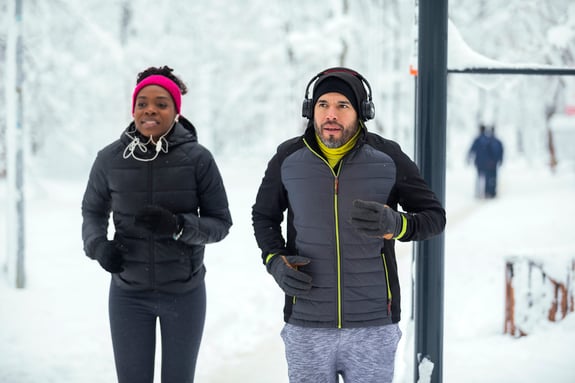
I visited Runners Forum to take a look at some of the new apparel that they have in stock this year and was very impressed with all they have to offer for this winter. After speaking with the store manager, we came up with 8 essential items you must have before you hit the streets on those cold days:
1) Running Shoes- No matter what the season it is critical that you are running in a shoe that is right for you. Not having a proper shoe specific to your body mechanics can lead to injuries or discomfort during the run or walk.
2) Wicking Base Layer- A long sleeve shirt that is efficient in wicking the moisture away from your body is important for both function and comfort. This piece is responsible for moving your sweat away from your body and out to the additional layers to keep you dry and warm.
3) Insulating Layer- This layer is generally fleece lined and continues moving moisture away from your body. It has the added responsibility of trapping body heat you are producing to keep you even warmer.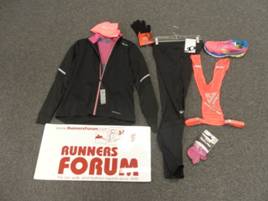
4) Wind and Water Resistant Jacket- For the most dreary days that involve sleet, rain and snow, a high-tech jacket can make a huge difference in your comfort level. Not only does it protect you from these elements, but it too will continue to wick away moisture from your body and trap your body heat.
5) Gloves and Socks- Also preferably in moisture wicking, these are crucial for keeping your fingers and toes warm and dry playing a huge factor in trapping your body heat. Additionally your fingers and toes are at a high risk of becoming frostbit on the coldest days so this is a piece that you can not afford to go without.
6) Running Tights- Since your legs are doing a majority of the work, you are producing a lot of heat in this area. Tights will be most efficient in holding in heat, but if tights are not your style, than a light insulated running pant will be your best bet.
7) Winter Hat or Headband- Similar to your toes and fingers, your ears are at a high risk for frostbite. Cover your ears and head to avoid this as well as add warmth to the area for comfort.
8) Reflective Gear- In the winter, the days are shorter which means many of your runs may start or finish in the dark. To be safe, wear as much reflective clothing as you can so that you can be visible to cars and others. Many winter clothing pieces are indeed reflective but a reflective vest is a good substitute.
This blog was written by Stephanie Kaiser, Fitness Center Manager. To find out more about the NIFS bloggers, click here.

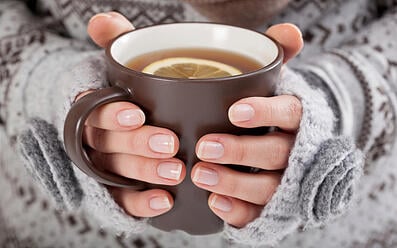 If you are like most people, as soon as the fall season arrives, it’s time to get your annual
If you are like most people, as soon as the fall season arrives, it’s time to get your annual 
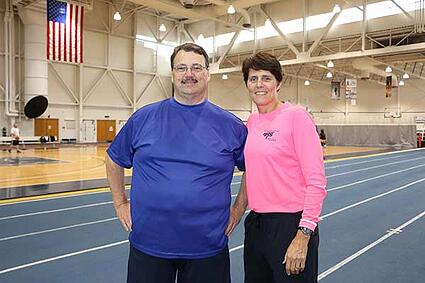 Have you ever considered what working with a personal trainer could do for you? Among many things, working with a personal trainer can help you to reach your goals, stay motivated, and provide you with accountability. Whether you are looking to lose weight, improve fitness, or use exercise as a way to improve your lifestyle, a personal trainer can be a great resource on your journey. We at NIFS believe that we house some of the best
Have you ever considered what working with a personal trainer could do for you? Among many things, working with a personal trainer can help you to reach your goals, stay motivated, and provide you with accountability. Whether you are looking to lose weight, improve fitness, or use exercise as a way to improve your lifestyle, a personal trainer can be a great resource on your journey. We at NIFS believe that we house some of the best  If you’re like me,
If you’re like me, 
 One of my favorite holiday traditions is making fabulous treats and snacks for friends, family, co-workers, and neighbors. Entire days are spent baking in the kitchen, and the best part (after sampling the treats first hand) is hearing how great everything tastes. Little do they know that with just a few simple tweaks, those cookies and candies can be dramatically lower in fat and calories. Here are a few easy ways to tweak your recipes for healthy eating.
One of my favorite holiday traditions is making fabulous treats and snacks for friends, family, co-workers, and neighbors. Entire days are spent baking in the kitchen, and the best part (after sampling the treats first hand) is hearing how great everything tastes. Little do they know that with just a few simple tweaks, those cookies and candies can be dramatically lower in fat and calories. Here are a few easy ways to tweak your recipes for healthy eating.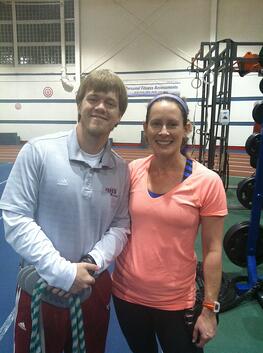 There are many benefits that come with working out in a group setting, ranging from social to helping you push through the tough parts of workouts.
There are many benefits that come with working out in a group setting, ranging from social to helping you push through the tough parts of workouts. 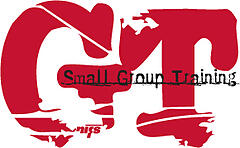 SOMETHING YOU HAVE LEARNED OR SOMETHING THAT SURPRISED YOU:
SOMETHING YOU HAVE LEARNED OR SOMETHING THAT SURPRISED YOU:
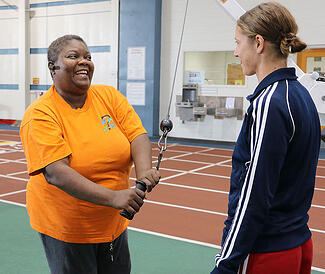 I’d like to take a few moments to highlight a member of the NIFS Lifestyle Program. This program provides extra guidance and observation to individuals with chronic medical concerns. NIFS’s Lifestyle Coordinator communicates with the participant’s physician about their progress and helps them plan workouts geared to their specific medical needs. Take a few minutes to read about Kim Flowers and learn how this program has changed her.
I’d like to take a few moments to highlight a member of the NIFS Lifestyle Program. This program provides extra guidance and observation to individuals with chronic medical concerns. NIFS’s Lifestyle Coordinator communicates with the participant’s physician about their progress and helps them plan workouts geared to their specific medical needs. Take a few minutes to read about Kim Flowers and learn how this program has changed her.
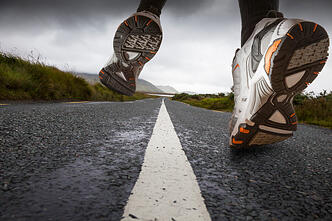 So you have the running bug! You have now completed a few 5K races after years of debating whether you would even be able to finish one, and now you want to run faster. Congratulations on being one of over 8 million people to complete a 5K last year!
So you have the running bug! You have now completed a few 5K races after years of debating whether you would even be able to finish one, and now you want to run faster. Congratulations on being one of over 8 million people to complete a 5K last year!

 Along the way, I have learned that fitness and wellness can seem quite complicated. Various mentors, self-described gurus, professors, doctors, and muscle magazines have provided us all with enough quick fixes, miracle workouts, and “sound” advice to help us become the person we want to become (and also fill an encyclopedia). Probably the best advice anyone has given me would be the old saying, “Find something you love to do, do it, and do it well.” If you do not love any form of fitness, whether it is ice hockey or
Along the way, I have learned that fitness and wellness can seem quite complicated. Various mentors, self-described gurus, professors, doctors, and muscle magazines have provided us all with enough quick fixes, miracle workouts, and “sound” advice to help us become the person we want to become (and also fill an encyclopedia). Probably the best advice anyone has given me would be the old saying, “Find something you love to do, do it, and do it well.” If you do not love any form of fitness, whether it is ice hockey or